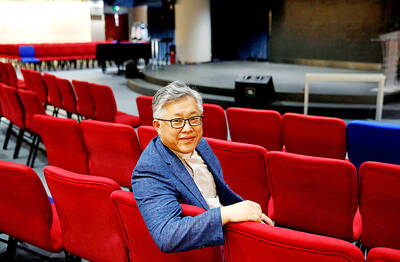A major tsunami struck China’s southern coast in 1076 causing “drastic cultural decline,” Chinese researchers said, in a study with implications for a densely populated region boasting multiple coastal nuclear power plants.
There is a growing body of scientific evidence suggesting an earthquake in the Manila Trench sent a wall of water coursing into what is now China’s Guangdong Province about a thousand years ago.
Now scientists believe they have narrowed down the date to an exact year — 1076 — and say the new data should set alarm bells ringing over whether enough is being done to defend against future tsunamis.
“This study confirms the risk of tsunamis in the South China Sea,” the research teams from the University of Science and Technology and East China Normal University wrote in this month’s issue of Chinese Science Bulletin.
“Such risk should be considered in future planning and construction of nuclear power plant, harbor and petroleum reserve structures on the coastlines of China,” they said.
A number of nuclear power plants sit on China’s southern coast, including at Fuqing, Daya Bay and a soon-to-open plant at Taishan.
The wider area is also one of the world’s most densely populated regions and includes multiple major coastal cities such as Hong Kong, Macau, Xiamen and Quanzhou.
The vulnerability of nuclear power plants to seismic events has become a major cause for concern ever since a 2011 earthquake and subsequent tsunami crippled Japan’s Fukushima Dai-ichi nuclear power plant, the worst nuclear accident since Chernobyl.
The Chinese research team first found evidence of a destructive historical wave on Lincoln Island (Hewu Island, 和五島) located in the middle of the South China Sea, in 2013.
They discovered rocks and corals that had been moved 200m from the shoreline and concluded only a major force of water could have been responsible.
Another team found shards of ceramics in tsunami sediment from the Song Dynasty (960-1279) on Nan Ao Island (南澳島), about 250km up the coast from Hong Kong’s eastern side.
East China Normal University professor Gao Shu (高抒) told Xinhua news agency that the southeast tip of the island used to be a town with official kilns for making porcelain.
Researchers struggled to find any archaeological artifacts from after the suspected wave until the later Ming dynasty.
They also found a shipwreck with 20,000 coins from around the time the tsunami might have struck.
“This cultural evidence indicates a drastic cultural decline caused by the tsunami,” they wrote.
China has begun moves to gather data in the South China Sea about potential tsunami threats, deploying early warning buoys off the Manila Trench last year.

Police in China detained dozens of pastors of one of its largest underground churches over the weekend, a church spokesperson and relatives said, in the biggest crackdown on Christians since 2018. The detentions, which come amid renewed China-US tensions after Beijing dramatically expanded rare earth export controls last week, drew condemnation from US Secretary of State Marco Rubio, who on Sunday called for the immediate release of the pastors. Pastor Jin Mingri (金明日), founder of Zion Church, an unofficial “house church” not sanctioned by the Chinese government, was detained at his home in the southern city of Beihai on Friday evening, said

Floods on Sunday trapped people in vehicles and homes in Spain as torrential rain drenched the northeastern Catalonia region, a day after downpours unleashed travel chaos on the Mediterranean island of Ibiza. Local media shared videos of roaring torrents of brown water tearing through streets and submerging vehicles. National weather agency AEMET decreed the highest red alert in the province of Tarragona, warning of 180mm of rain in 12 hours in the Ebro River delta. Catalan fire service spokesman Oriol Corbella told reporters people had been caught by surprise, with people trapped “inside vehicles, in buildings, on ground floors.” Santa Barbara Mayor Josep Lluis

The Venezuelan government on Monday said that it would close its embassies in Norway and Australia, and open new ones in Burkina Faso and Zimbabwe in a restructuring of its foreign service, after weeks of growing tensions with the US. The closures are part of the “strategic reassignation of resources,” Venezueland President Nicolas Maduro’s government said in a statement, adding that consular services to Venezuelans in Norway and Australia would be provided by diplomatic missions, with details to be shared in the coming days. The Norwegian Ministry of Foreign Affairs said that it had received notice of the embassy closure, but no

A missing fingertip offers a clue to Mako Nishimura’s criminal past as one of Japan’s few female yakuza, but after clawing her way out of the underworld, she now spends her days helping other retired gangsters reintegrate into society. The multibillion-dollar yakuza organized crime network has long ruled over Japan’s drug rings, illicit gambling dens and sex trade. In the past few years, the empire has started to crumble as members have dwindled and laws targeting mafia are tightened. An intensifying police crackdown has shrunk yakuza forces nationwide, with their numbers dipping below 20,000 last year for the first time since records